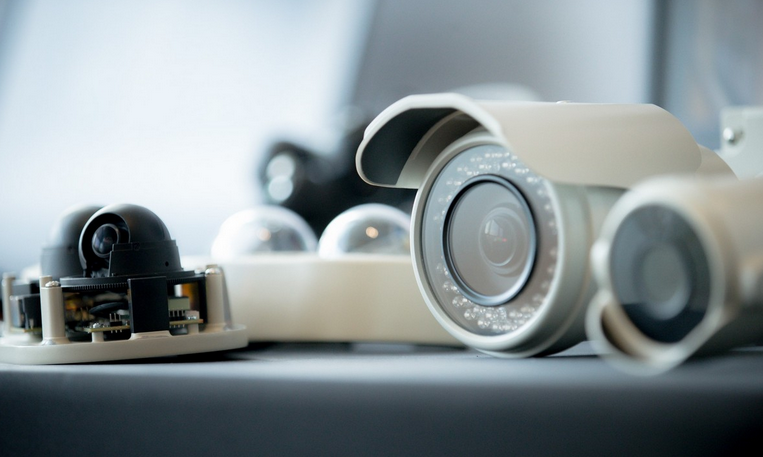
Video surveillance has long been used to solve various problems. In the 1950s and '60s, these were analog closed video surveillance systems, the name CCTV (closed circuit television) reveals the meaning of the concept.
The development did not stand still even in the '90s, that is, in 1996 the world's first digital IP video camera was developed by the company Axis Communication. The technical characteristics of the camera did not seem so ambitious, and, compared to analog ones, the cameras looked pale. Despite this, about 10,000 units of the first IP cameras were sold.
The entry of IP cameras into the market served as a starting point for the development of video surveillance systems, the appearance of the camera required the emergence of software for working with it.
Over time, new IP video surveillance cameras appeared, along with software. The development went two ways: some companies developed software for working with any IP cameras, others produced their own cameras and software for working exclusively with their cameras.
This development approach divided video surveillance systems into “open” and “closed” systems. Open platform systems develop in the direction of multi-feature support for cameras regardless of the manufacturer, and closed ones — single-vendor systems that support work only with their own production equipment.
However, now there is a tendency toward the fact that closed systems are beginning to look towards supporting third-party equipment, but they are still far from being called open platforms.
Additionally, it is worth mentioning video analytics. Today, it is an integral part of VMSs, which is rapidly developing and can facilitate and help operators not to get lost in the huge stream of video information. And also to solve business problems and, in general, turn video into data that can easily be operated. Therefore, a modern and integrated video surveillance system should support work with analytics and support integration with the access control and building management system.
There are plenty of open video surveillance platforms on the market. In order to understand them a bit, we will conduct a brief review of some VMSs and more details you may see in VMS comparison table.
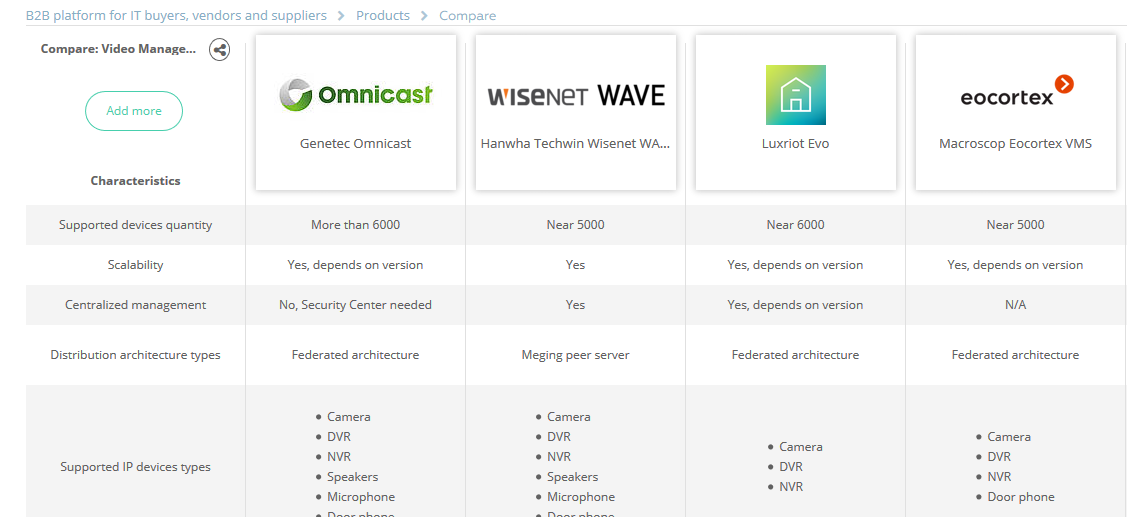
MileStone Systems. XProtect
The company Milestone has been developing software for IP video surveillance systems since the late '90s. Due to the origins of its activities, it works closely with Axis Communication, a leader in the production of video surveillance devices.
For 10 years, Milestone has been the leader in the VMS market based on IHS Markit as well as the founder of the concept of an open platform in video surveillance.
The product line is represented by the XProtect software group, seven versions, and the Husky line of network recorders.
The product line covers various needs for video surveillance systems: from simple and small systems to complex, geographically distributed ones without a limitation on the number of cameras per server or the system as a whole.
To become acquainted with the software product, it is possible to download a trial version of any version or to use the younger version of the Essential+ product absolutely free on 8 devices, without a limitation on camera resolution, connected users, storage period, and more.
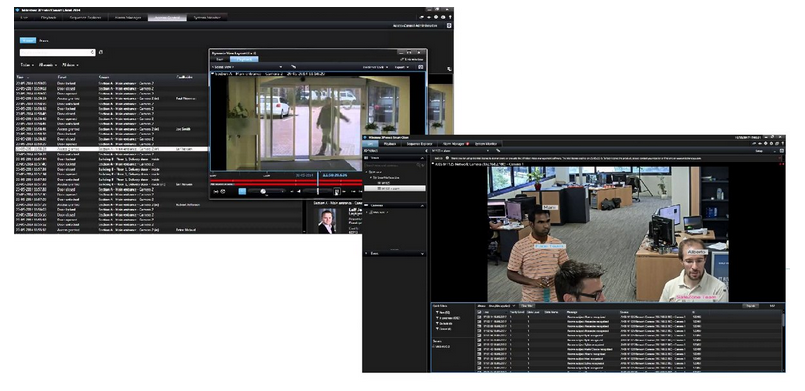
Milestone supports the largest number of IP devices at the driver level, and now this is more than 7,000 proven models from various manufacturers and the number of ready-made integrations — video analytics (perimeter protection, face recognition, license plate recognition, parking solutions, business analytics, sound analytics), access control systems, building management systems, etc.
To customize the functionality, you can use the free SDK in all versions and/or the configuration API in the higher version.
Milestone has a very simple licensing system. Licensing consists of one basic software license without being tied to the server hardware and device license. Licensing of the device does not limit its functionality and allows you to use, “squeeze” the maximum from the device: the number of streams (channels), I/O ports, sound support, work with a memory card, built-in analytics. The basic software license is not limited to one installation and can be installed on various locations and sites without restrictions. Reconnecting the device within the same basic license does not require additional licensing, which makes it possible to perform double entry, for example. Connecting recorders to Milestone XProtect in most cases requires one license, thus you can connect the NVR to 64 channels. The only drawback to working with recorders is the lack of direct access to the archive on the recorder.
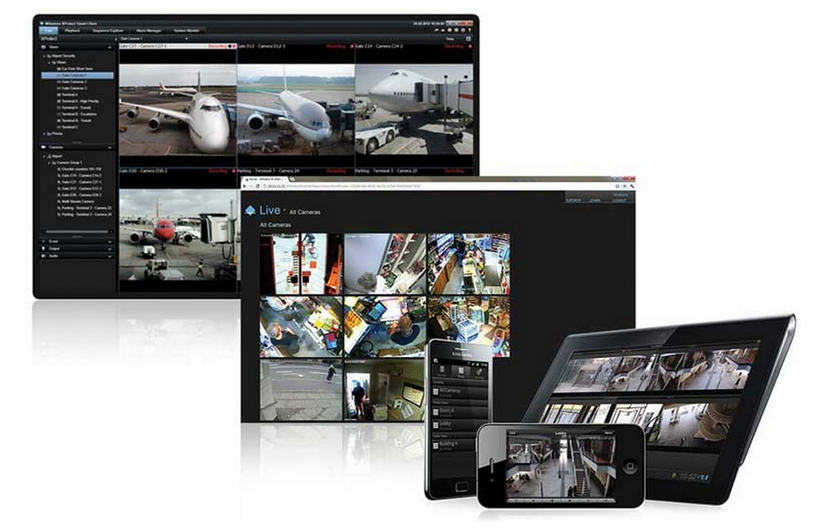
Milestone XProtect has no limit on the number of users and simultaneous connections (one version is limited to five client connections). It supports three types of users: proprietary, Windows, and Active Directory. For the convenience and flexibility of working with VMS, there are three absolutely free clients: a thick client, a mobile and a web client, allowing you to work with live, archived video and to respond to alarms in the system. Using a mobile client, you can turn a device with a camera into an IP camera and broadcast video with the ability to record to the archive.
For the configuration of the system, additional software is used, it is client-server software and can be used anywhere in the network availability to the server.
Milestone does not develop its own analytics. The company's ideology is to create a convenient and open tool for integration and working with video: viewing, recording, and ensuring its safety and authenticity, and the development of analytics should be pursued by profile companies, so a huge number of technology partners and integration solutions are in the Milestone portfolio.

To expand the functionality, Milestone XProtect has several modules in its portfolio, these are Transact — for working with transactions (textual information) and comparing them with video, LPR — license plate recognition system, Retail — module for integration with an ERP system, and ACS — integration with access control systems.
The Milestone XProtect VMS is designed for use in the Windows environment, both the server and client part (thick client). It uses MS SQL to save the configuration and various service information, the default version is Express. Milestone supports work in a virtual environment.
Genetec. Omnicast
Genetec has been operating since the late '90s and is one of the market leaders in video surveillance systems.
Genetec is the developer of a unified security platform. The main products are Security Center and Omnicast. The latter product is the video surveillance system itself, and the first is the upper point, an aggregator of additional system components, and some Onmicast system capabilities are revealed when using Security Center.
And so, Omnicast is presented in three versions with different restrictions on the number of cameras in the system, users, and other functionalities.
Genetec is able to close various needs to a video surveillance system: from simple and small systems to complex, geographically distributed ones with no limitation on the number of cameras per server or the system as a whole, but with a restriction on the recording server's stream of 200 Mb/s, therefore, get ready for a lot of recording servers when installing a large number of cameras.
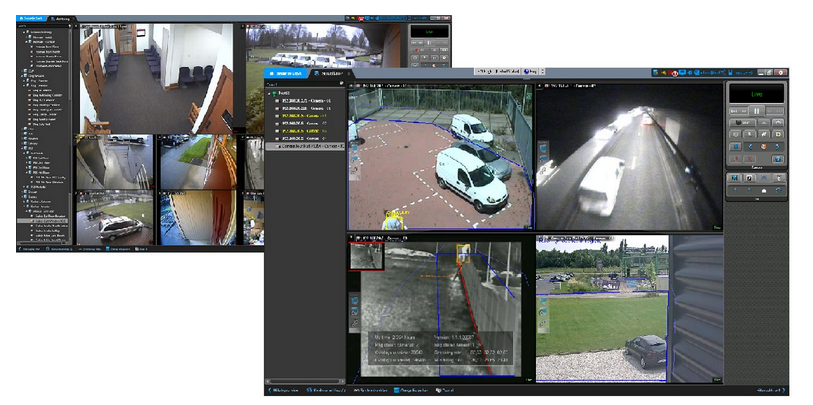
There is no free version of Genetec, so the only option to become familiar with the software product is to request a demo version.
Genetec Onmicast supports about 6000 IP devices and a large number of integrated video analytics solutions (perimeter protection, face recognition, license plate recognition, business analytics) access control systems, building management systems, etc. Information on device support and the search for integrated solutions can be found on the Genetec website, because support, for example, can only be possible in Security Center, not in Omnicast.
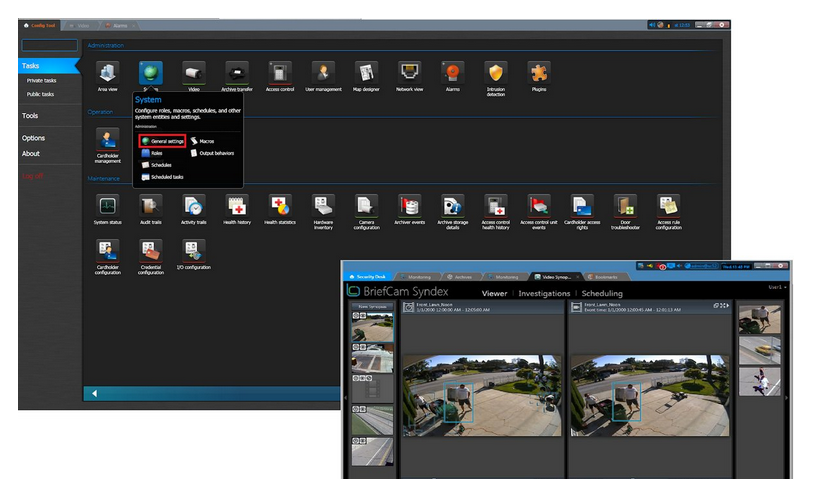
To expand the functionality, Genetec provides SDK.
Genetec is licensed according to the number of devices, with a link to the basic license. The supported hardware functionality depends on the level of integration, this can be support for multiple channels, sound, I/O ports, work with a memory card, on-board analytics. The license is tied to some system information, so a PC configuration change can provoke its cancellation and require re-activation.
Genetec Omnicast, depending on the version, has a limit on the number of connected users, there is no limit only in the higher version. The type of user accounts supported in Onmicast is one — proprietary, integration with Active Directory is possible when using Security Center.
A thick client software is provided for the operator, a mobile client is absent. To support mobile devices and web access, you will need to install a mobile server as a component of Security Center. The mobile server is a licensed component. Mobile access, in turn, will provide not only the ability to view and work with video from anywhere in the world, but also to use the mobile device camera as an IP camera.
Genetec does not develop its own analytical modules, and there is a wide choice of partners for integrating various kinds of video analytics.
Genetec functionality can be extended with its own modules, this is the AutoVu license plate recognition system and the Synergis access control systems. The use of these components implies the presence of Security Center.
Genetec also produces software and hardware systems Streamvault.
Genetec Omnicast is designed for Windows, both the server and client part. To configure the system, separate software is used. It uses MS SQL to store various service information, work in a virtual environment is supported.
Luxriot. Evo
Luxriot is an American software development company for video surveillance systems, besides software, it offers servers with pre-installed software and capture cards for analog video surveillance systems.

Luxriot is marketed with three software versions and covers the needs of small and large video surveillance systems, including geographically distributed ones. The system has no restrictions on the number of cameras per server or system within the acquired license.
You can familiarize yourself with Luxriot products using a demo license request, or you can use the free version of the product. The free version has a number of limitations, the main ones of which are: nine supported channels, a maximum camera resolution of up to 2Mp, and one user connection per system. A free license can be extended up to 16 channels per demand.
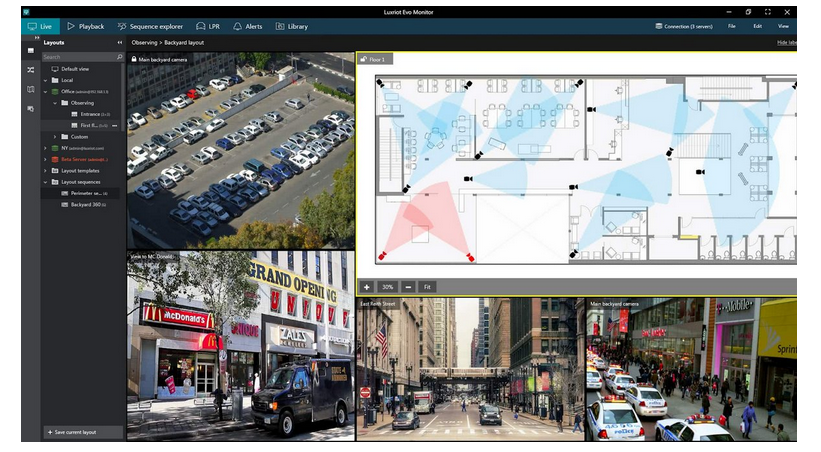
The Luxriot VMS line supports about 6000 IP devices and supports a small number of integrations of third-party video analytics solutions and solutions such as access control systems. As for on-board analytics cameras, Luxriot supports a limited list of manufacturers.
Luxriot licensing is channel-based and distributed as bundles for younger versions and per channel in the older version. Since most IP cameras on the market are now multi-channel (profile) ones, per-channel licensing in some cases imposes an inconvenience and requires additional licensing when using multi-channel devices. The license in Luxriot is tied to the server hardware, so if you change the configuration, re-activation may be required.
Despite the small choice of solutions for the integration of third-party solutions, the VMS functionality can be extended with its own analytics modules. Luxriot develops the following video analytics modules: perimeter protection, business analytics, and license plate and face recognition.

API/SDK is provided to solve issues on functionality expansion and integration.
User connections are limited only in the free version. Two types of user accounts are supported: proprietary and Active Directory.
Three types of clients are available for operators: a thick client, a mobile and a web client. Client applications are absolutely free and are not additionally licensed. Using a camera on the device of a mobile client allows you to broadcast and record video into the system.
Luxriot is designed for Windows, its server part, and the main software for the operator — for Windows and MacOS. Luxriot uses a proprietary database to save configuration and system information and supports work in a virtual environment.
Network Optix. NxWitness / Hanwha. Wisenet Wave
This VMS is regarded in two names and from various vendors. The reason for OEM, the company Network Optix brands its VMS NxWitness for Hanwha, which is known on the market as Wisenet Wave. Network Optix is not limited to cooperating with Hanwha in this regard, as a result, you can find a familiar interface from other vendors.
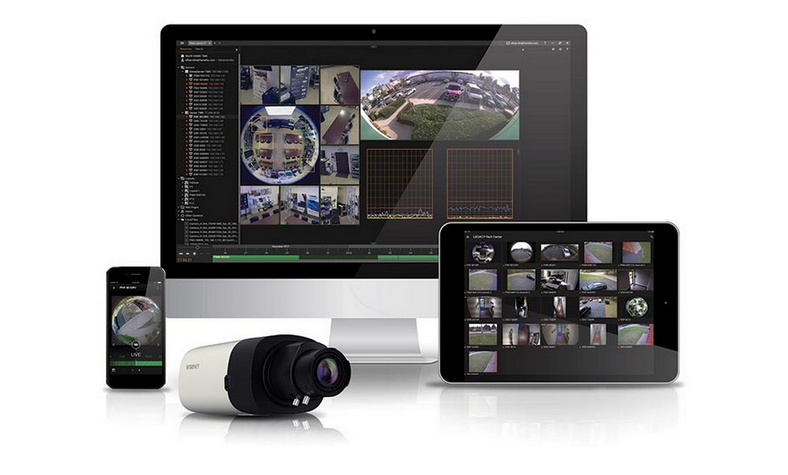
Network Optix has its origins in 2010-2011 and is represented on the market by the main software NxWitness.
NxWitness exists in one version, without division into versions. Of all the ones considered, the VMS has the most compact installer and is positioned by developers as a very lightweight product that is undemanding on hardware resources, and not at the expense of functionality.
This VMS is suitable for objects of various sizes, it is easily scaled and is applicable even for geographically distributed objects. In NxWitness, there is a limit of 128 devices per server, and the recommended number of servers in a single system is no more than 50. Theoretically and practically, the number of servers may be more, but a developer should be involved in planning the system, and such installations exist.
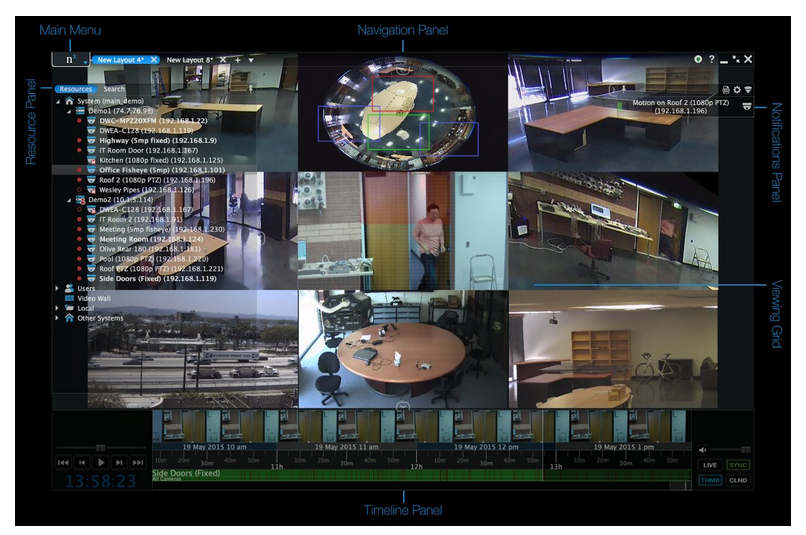
For acquaintance with NxWitness, a demo license is available on the manufacturer's website, and NxWitness can be used absolutely free to view live video or as a video proxy server.
NxWitness supports about 5000 IP devices. It is licensed based on the devices, and when the NVR is connected, every four channels are licensed. NxWitness itself works well with the NVR, in particular from Hanwha, and supports access to the archive on the device itself. The license is tied to the hardware, after changing the server configuration, you may need to re-activate the license. The license makes it possible to use the fully supported functionality of the IP device (I/O ports, sound, on-board analytics), as for the channels, NxWitness only supports dual-channel operation — primary and secondary. In the NxWitness architecture, the secondary stream plays the role of reducing the load on the network or on the operator's hardware when a video is watched. The second stream is recorded by default, but recording can be disabled.
The system has a small selection of ready-made video analytics integration solutions but provides a multi-functional API and SDK for free. With the use of the API, you can fully automate routine work with the system, up to its full configuration or non-standard monitoring.
There are two types of accounts in the system: proprietary and LDAP. There are three client software for working with VMSs: thick client, mobile and web clients. All clients are absolutely free. The system configuration program is combined with the video program, a single interface and separation occur at the level of user rights.
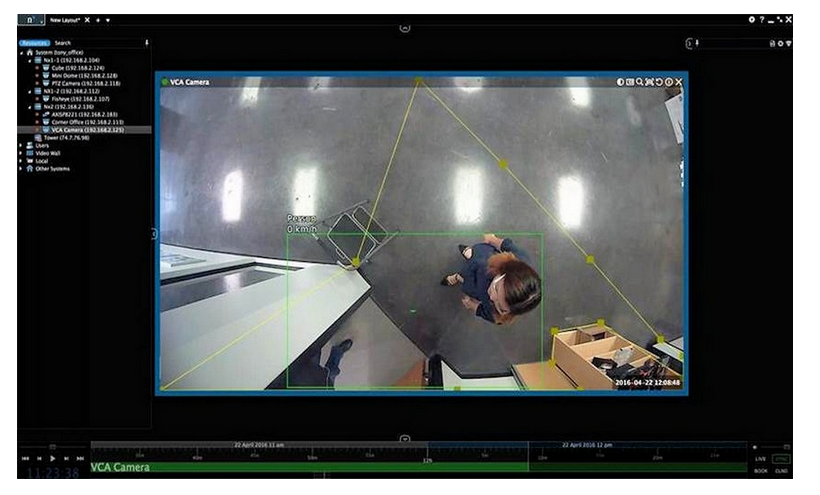
The server part of NxWitness supports work in the Windows and Linux environment, the client part — Windows, Linux, and MacOS. A distinctive feature is the support of the ARM architecture for the server part of the software. The vendor tested work on single-board computers Raspberry Pi and Banana Pi, although theoretically there are no restrictions for use on other similar devices.
NxWitness can be deployed in a virtual environment as well as in Docker.
Satellite Innovation. Macroscop (Eocortex)
Satellite Innovation is a Russian company that develops software solutions for professional video surveillance systems under the name Macroscop for the European market known as Eocortex.
Macroscop dates back to 2008 and develops software, video analytics functions, and network recorders.
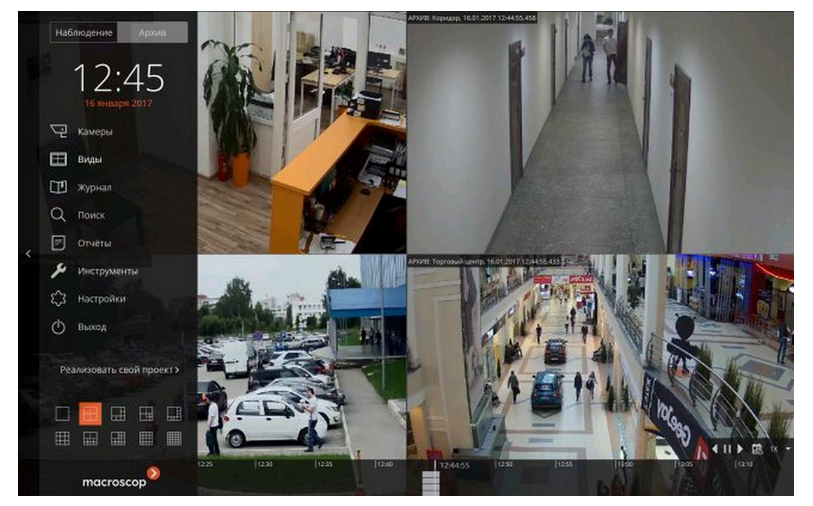
Macroscop includes three software versions with various numbers of supported cameras, servers, client connections, and analytics support. Macroscop is applicable for small objects and large objects. There are no restrictions in older versions on the number of cameras in the system, but the number of cameras per server is limited to 479.
A demo version of the product is available for review, there is no free version of Macroscop.
The Macroscop product line supports about 5,000 IP cameras and certain models of recorders. Licensing is channel-based, the majority of IP cameras on the market are now multi-channel (profile), this type of licensing in some cases imposes an inconvenience and requires additional licensing when using multi-channel devices. The license is tied to the server hardware, so if you change the configuration, reactivation may be required. After activating the key, it cannot be transferred to another computer. Alternatively, it is possible to use a USB key that does not have a binding.
Support for on-board analytics from the Macroscop cameras is not observed. For this purpose, Macroscop offers the use of intelligent modules built into the software. The system has about fifteen modules, they are licensed separately based on the number of channels, the higher version includes some of the modules for free. The funny fact is that dewarping is a sweep of the Fisheye camera, belongs to the intellectual module, and is licensed additionally.

Macroscop has its own SDK for the needs of integration and expansion of system functionality. There are practically no free third-party video analytics solutions available, but there are integrations with some access control systems.

The system supports one, proprietary account type. Active Directory user support has been discontinued. There are three client software for working with VMSs: main, mobile, and web. All clients are absolutely free. There is a separate configurator for system configuration.
The server and client part supports work in the Windows environment.
The choice of video surveillance systems must be approached comprehensively, thoroughly, and with a look into the future. The main choice can be between a closed and open video surveillance system, between a system with embedded analytics or without but with the possibility of integration; and you always have to consider whether there is a need to integrate third-party systems.
What to choose? As for me, the choice is obvious — an open platform and preferably in the full scope of this word.
An open platform will give you the flexibility and the right to choose — without a binding to IP equipment, hardware systems, and often analytics. The openness of the video surveillance platform will give you a field for action — testing and choosing a solution that will really solve your problems.
Therefore, in choosing a system, it is important to pay attention to its innovativeness and track record. You need to tune yourself to get the most out of the product. And you should not look only at the cost per channel, but rather, an estimate of the ratio of the cost of the channel to its value may be a more reasonable solution.
I wish you a better choice. And write about your experience in implementing video surveillance systems in order to replenish the knowledge base in this category for the rest of them who just choose them.
Author: Iaroslav Tverdokhlib, for ROI4CIO